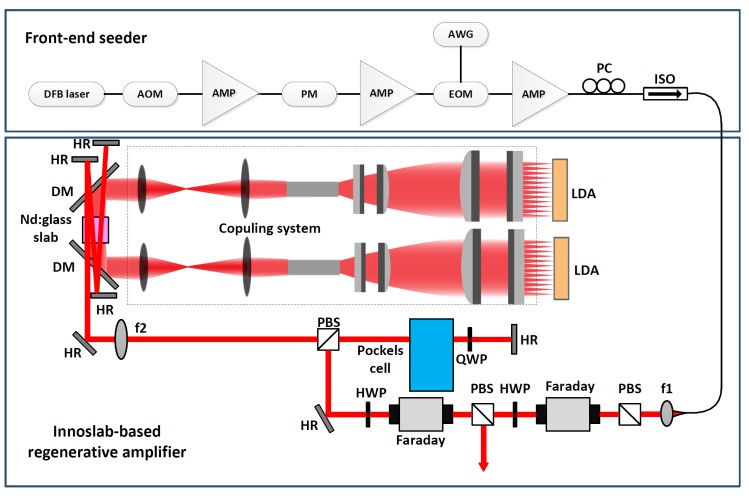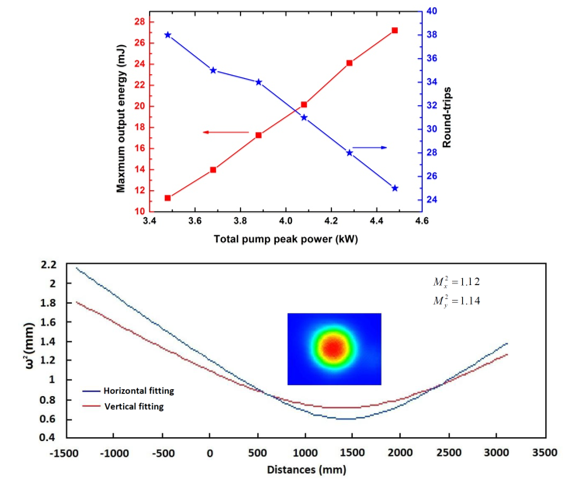High gain and high energy rod Nd:glass regenerative amplifier, which is quite compact and can provide high-optical signal-to-noise ratio and excellent stability, has been actively developed for large-scale laser facility dedicated to inertial confinement fusion, such as the National Ignition Facility (NIF), SGII series, and Inertial Fusion Energy (IFE). However, the thermal effect inside the Nd:glass rod limits the repetition rate below 1Hz even with active water cooling.
Recently, researchers from Shanghai Institute of Optics and Fine Mechanics of Chinese Academy of Sciences (SIOM, CAS) have developed a Innoslab-based Nd:glass regenerative amplifier without active cooling. A 27 mJ, 5 ns near diffraction limited laser output at 1 Hz was achieved. The results were published on OSA Continuum.
In their experiment, the whole amplifier system consisted of a home-built all-fiber front-end seeder and an Innoslab-based regenerative amplifier, as shown in Figure 1.
The 1053 nm pulse output from the seeder was with 270 Pj at 1 Hz repetition rate. Afterwards, the pulse was collimated by an aspherical lens into the regenerative amplifier. The regenerative amplifier consisted of a dual stage optical isolator, a Innoslab-based nd:glass laser head and a linear resonant cavity, which is optimal designed to keep power densities in the Nd:glass slab and KD*P crystal media in a range below the damage threshold.
The study demonstrated that the Innoslab-based passive-cooled nd:glass regenerative amplifier has several excellent parameters such as high-energy (27 mJ), high beam quality (M2 =1.13) and high energy stability (1.5% rms). The Innoslab-based nd:glass regenerative amplifier designed for application in a front end can replace several stages of an amplifier and simultaneously improve beam quality, energy stability, and temporal profile stability and fidelity.
This innoslab-based nd:glass regenerative amplifier shows an alternative method for PAM in large-scale laser facility.
This work is funded by the National Natural Science Foundation of China, Program of Shanghai Academic/Technology Research Leader and Shanghai Science and Technology Foundation for Young Scholars.

Fig1. schematic of the passive-cooled Innoslab-based Nd:glass regenerative amplifier system.

Fig2. The output energy and output beam quality of the regenerative amplifier
Article website: https://www.osapublishing.org/osac/fulltext.cfm?uri=osac-2-6-1838&id=412687
Contact:
Mr. Cao Yong
General Administrative Office
Shanghai Institute of Optics and Fine Mechanics, CAS
Email: caoyong@siom.ac.cn